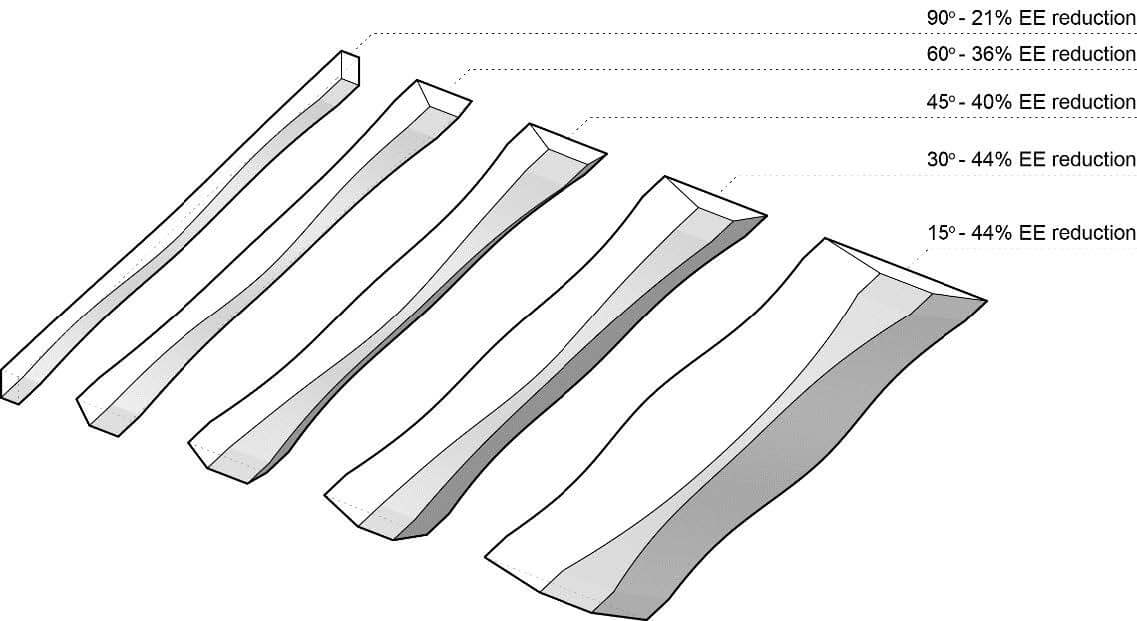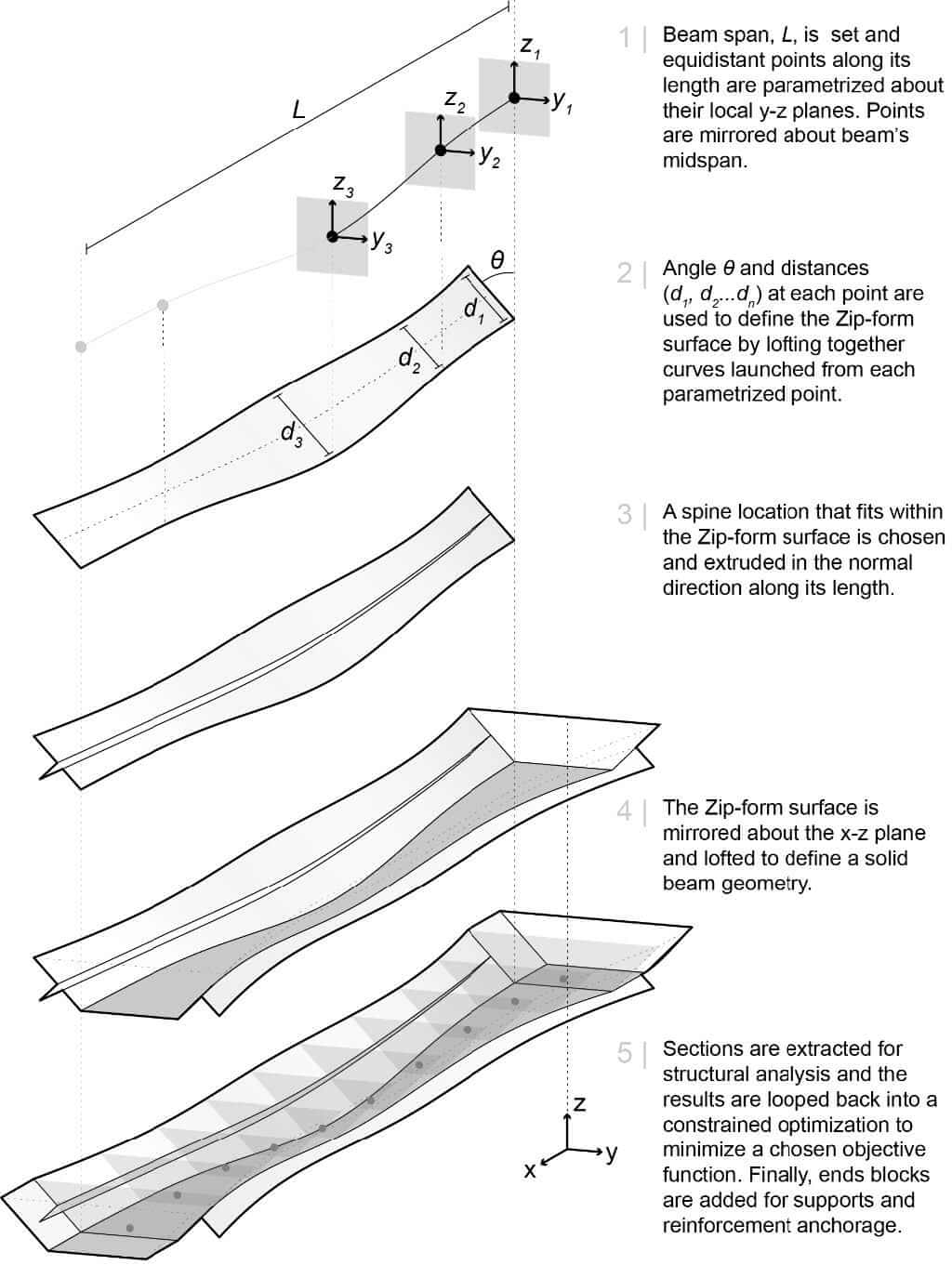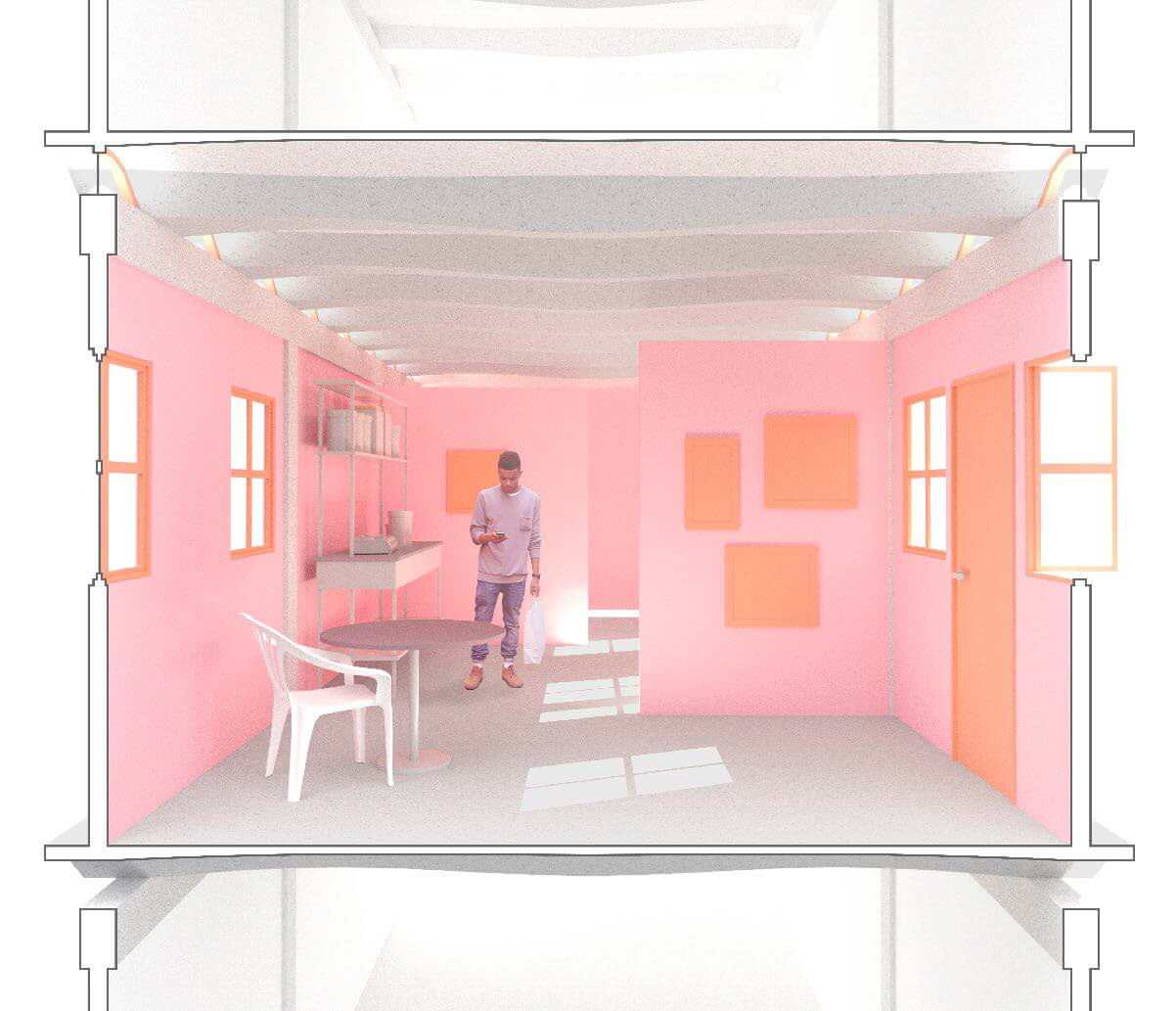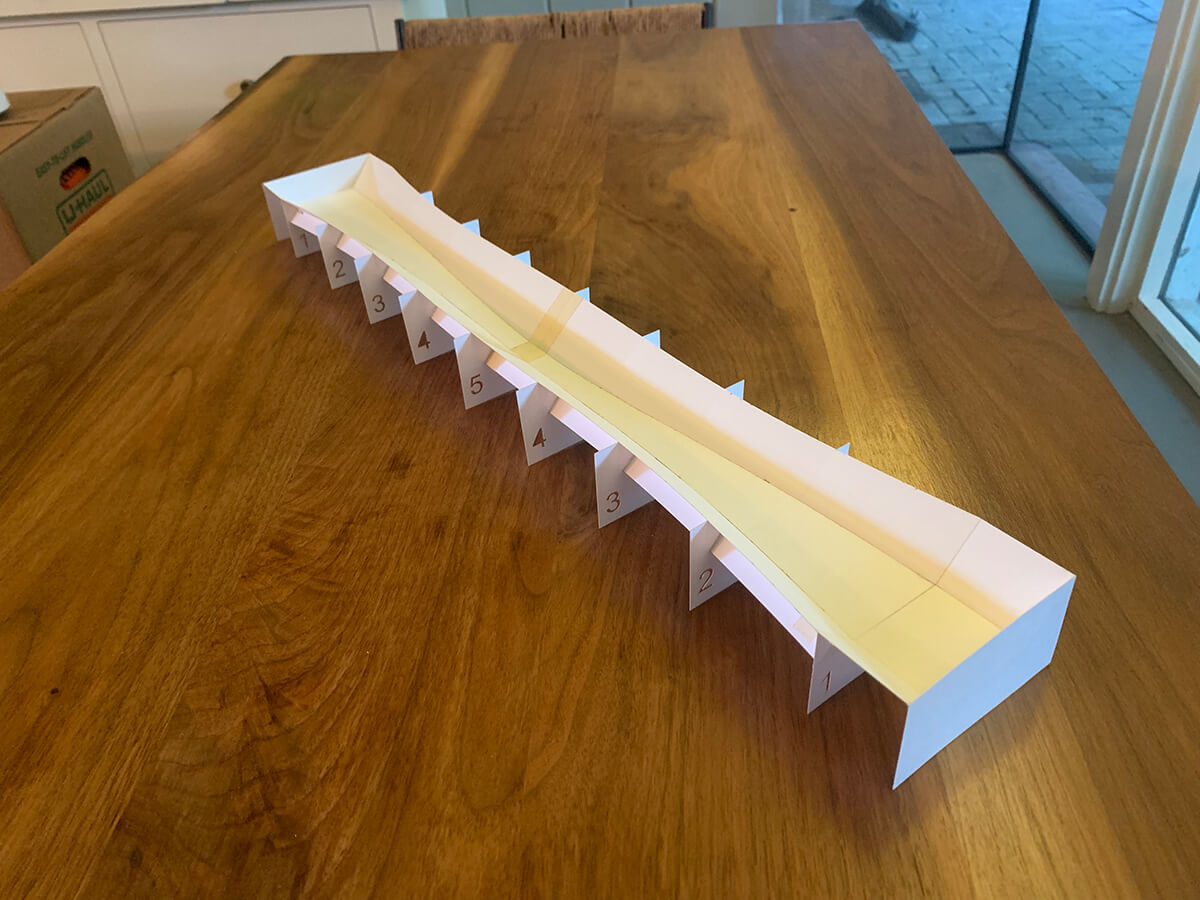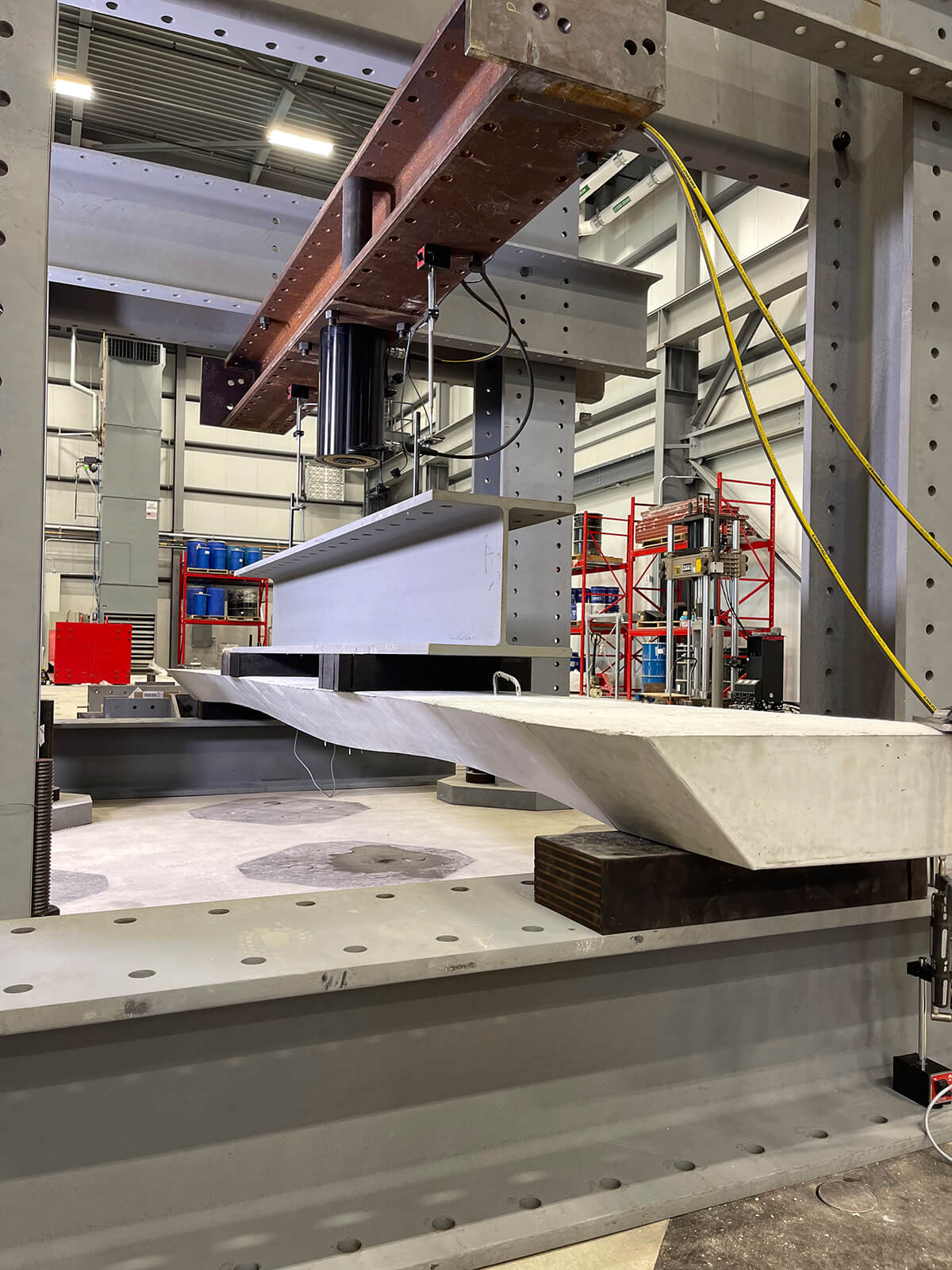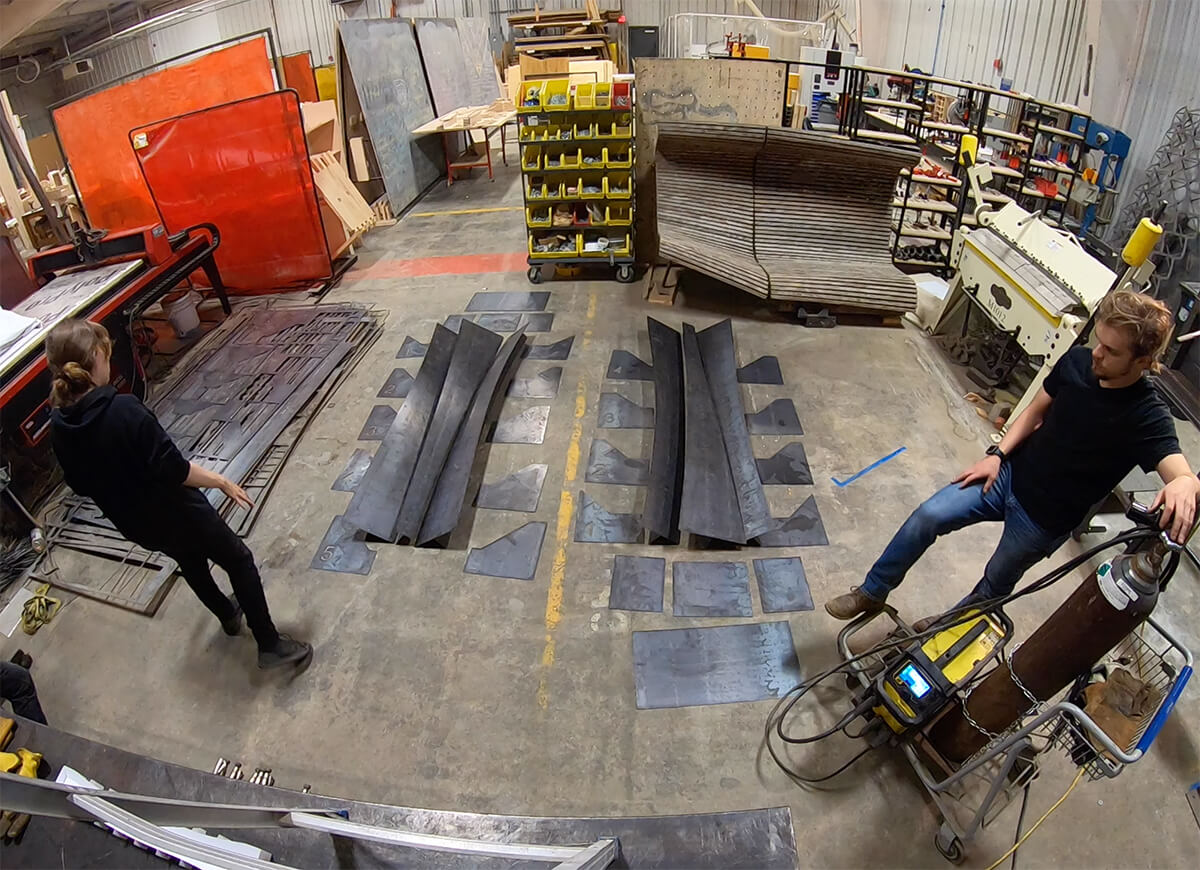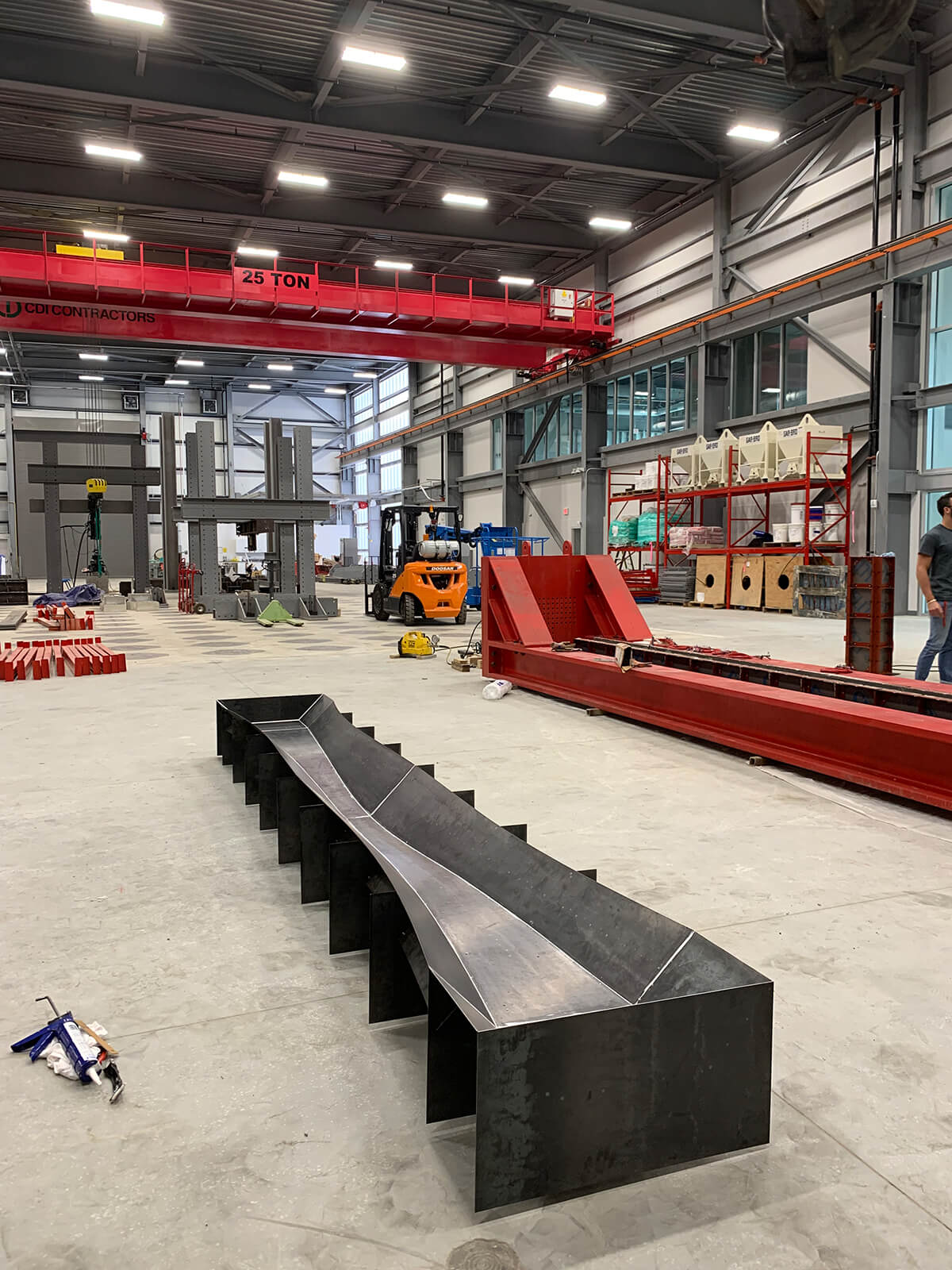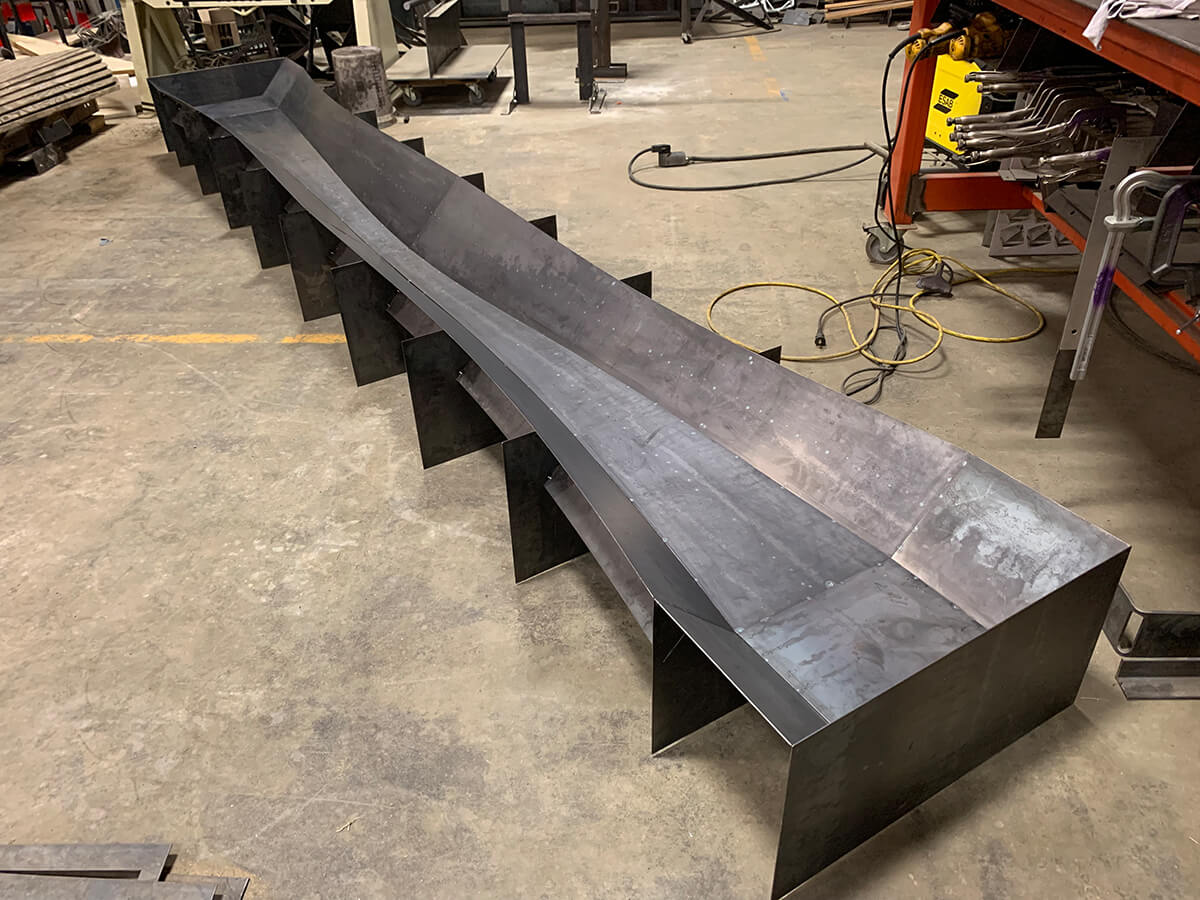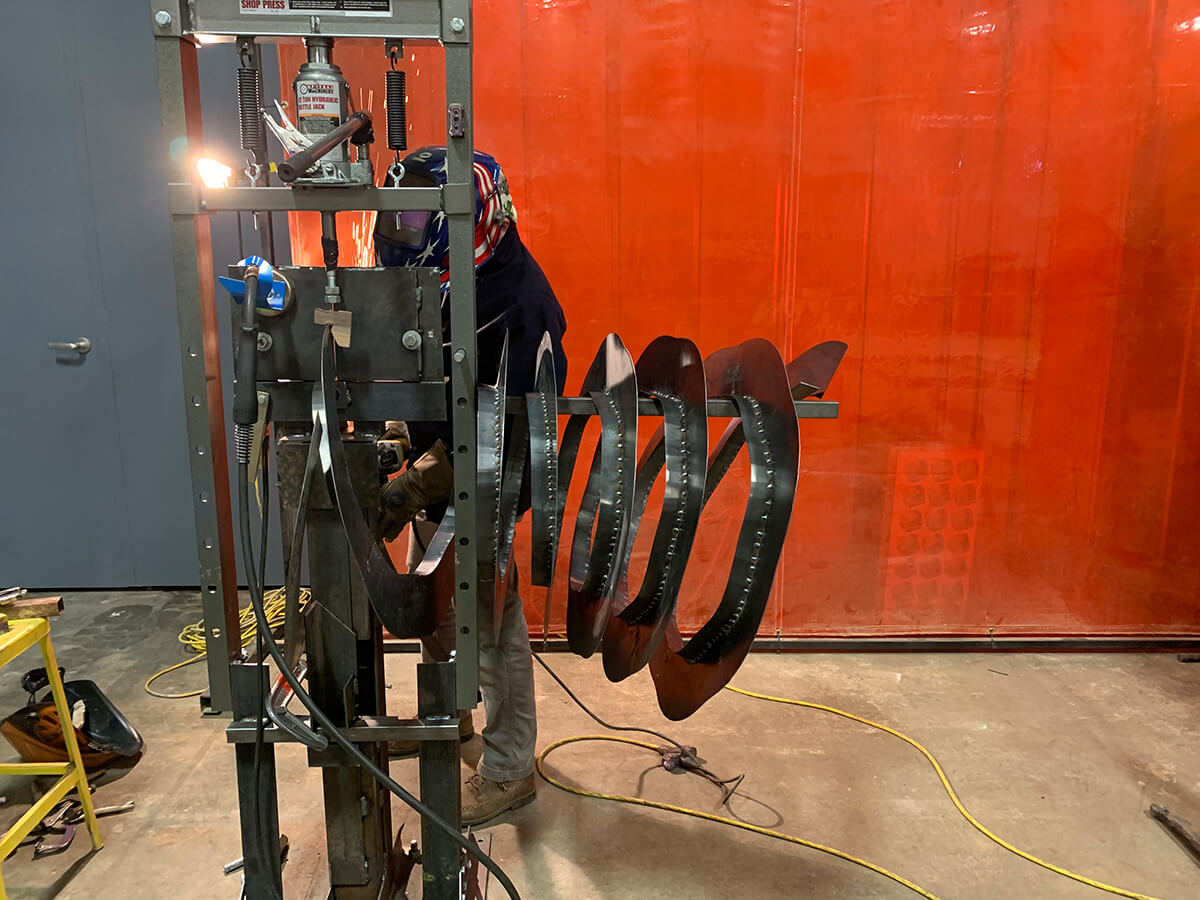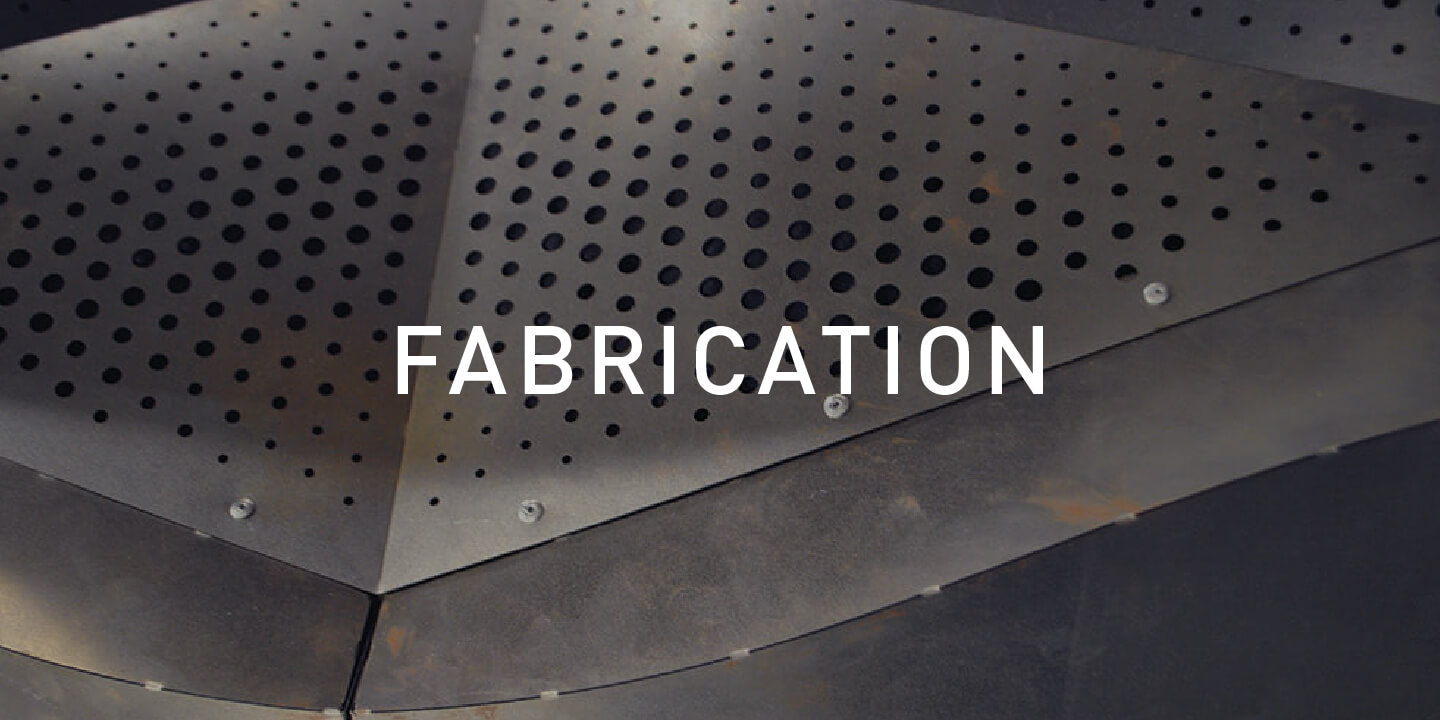Zip Formwork
Zip Formwork
The doctoral research of Mohamed Ismail, done under the direction of Caitlin Meuller at MIT, focused on shape- optimized concrete as a means to reduce necessary concrete material, and thus embodied energy, in the production of concrete structures, particularly focused on the growing construction sector of the global South. Zip- Formwork was born out of a collaboration among Ismail, Meuller, Edmund Harriss and me, as we applied the Zip- Form method to the production of formwork for shape- optimized concrete structures. Shape optimization produces beam or slab forms that have curving surfaces instead of the normal flat or prismatic forms we tend to use when building with concrete. Formwork for casting curving forms of this scale can be difficult to produce, and often require very specialized equipment and materials that are not commonly found in all parts of the world. Zip-Formwork simplifies the production of these curving forms, making the method less costly and more accessible for use all over the world. The Zip-Formwork method for producing concrete formwork was found to be the lowest embodied energy method for producing forms for shape-optimized concrete when compared to other methods in use. These shape-optimized structures can reduce the amount of concrete required for the same structural capacity by up to 50%.
A 16-foot long beam produced using Zip-Formwork was tested in the University of Arkansas CEREC Center, and it was found to behave as structurally calculated, validating the method.
